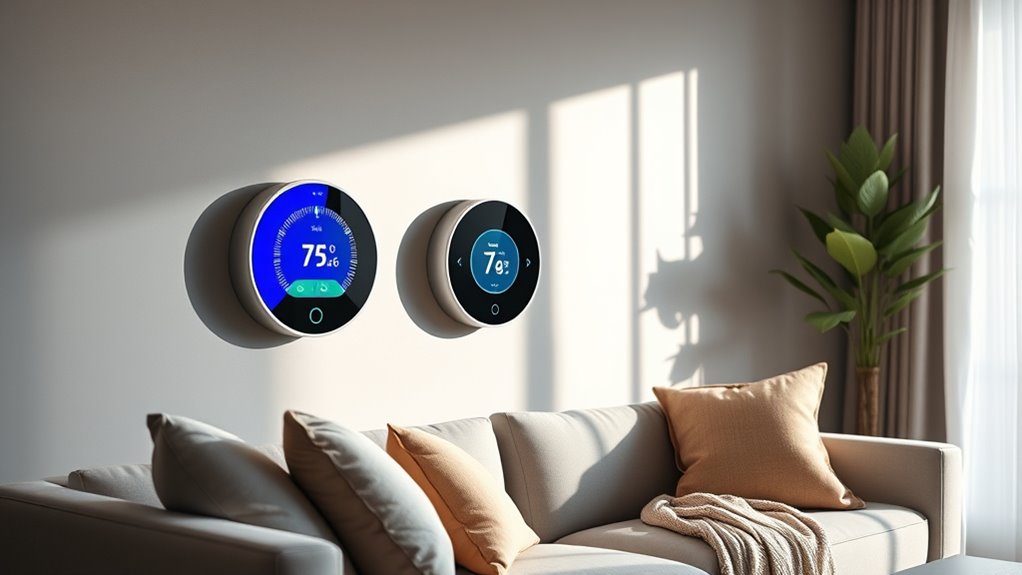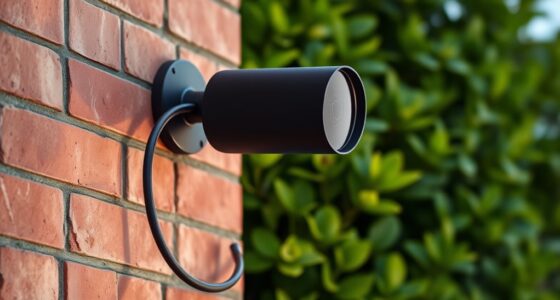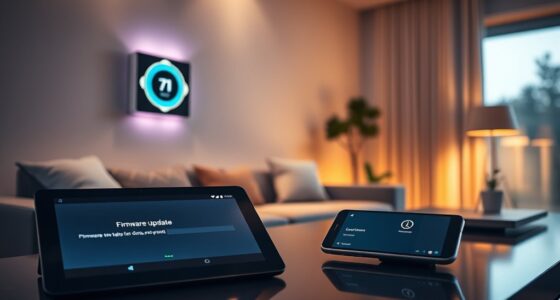Smart thermostats can boost your home comfort and cut energy bills if they’re compatible with your HVAC system and you use their features effectively. They offer remote control, automation, and energy insights that can save you around 8% annually—more in extreme climates. However, they may not suit radiant heating systems or homes with older setups. To discover if they’re a good fit for you, explore the details further.
Key Takeaways
- Smart thermostats improve comfort and reduce energy costs when properly integrated with compatible HVAC systems.
- They are less effective with radiant heating systems and may not justify the investment in such homes.
- Features like remote control, learning algorithms, and presence detection enhance savings but depend on user engagement.
- Significant savings are more likely in extreme climates and with correct scheduling; average annual savings are around 8%.
- Proper setup and understanding your home’s heating system are essential to determine if a smart thermostat is worth it.
How Smart Thermostats Improve Home Comfort and Save Energy

Smart thermostats enhance your home comfort while saving energy by maintaining consistent temperatures and allowing remote control. With smart thermostats, you can set your ideal temperature—often around 72°F—and trust the device to keep it steady. Features like motion sensors and geofencing detect when you’re home or away, automatically adjusting settings to avoid unnecessary heating or cooling. Automated scheduling and learning algorithms adapt to your routines, ensuring comfort during your daily activities and reducing energy waste when you’re absent. Additionally, many smart thermostats support compatibility with various HVAC systems, making integration straightforward for different home setups. Compatible remote sensors help balance temperatures across different rooms, improving overall comfort. By intelligently adjusting your HVAC system, smart thermostats prevent temperature swings, creating a cozy environment while notably reducing energy consumption. Properly configured, they can also help manage home heating solutions, ensuring your system operates efficiently. Incorporating remote work habits can optimize your home’s climate management for increased efficiency and comfort. Regular updates and calibration of the device can further enhance its accuracy and performance. Properly maintaining the thermostat ensures it functions correctly and maximizes energy savings.
Key Features and Benefits of Modern Smart Thermostats
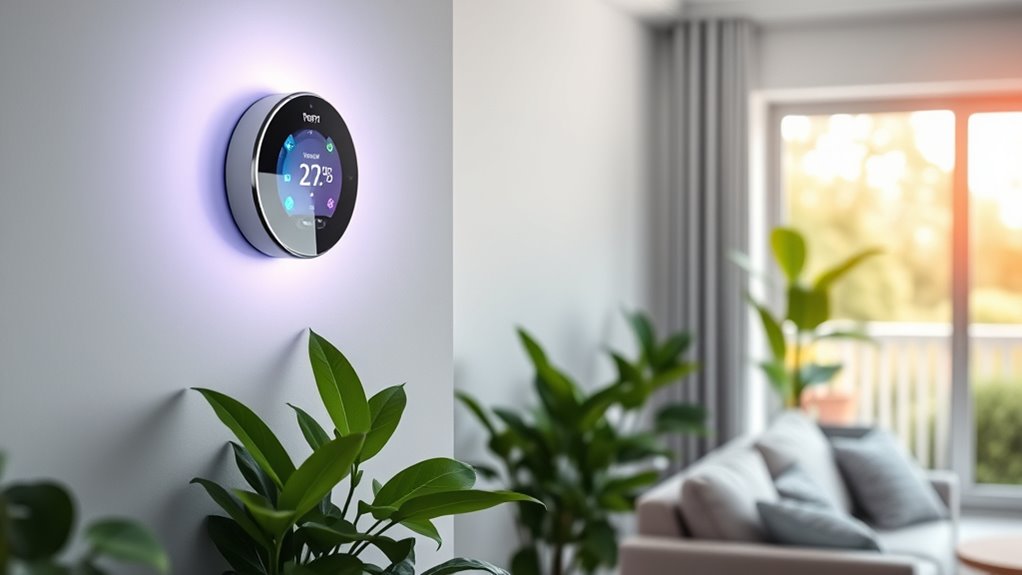
Modern smart thermostats offer a range of features that enhance both convenience and energy savings. With remote control via your smartphone, you can adjust your home’s temperature anytime, anywhere. They also include learning algorithms that automatically adapt to your routines, optimizing comfort and efficiency. Many models feature motion sensors and geo-fencing, which detect your presence and adjust settings accordingly. Additionally, detailed energy reports help you track usage and identify savings opportunities. These features work together to reduce utility bills—often by around 8%—and make managing your home temperature effortless. Plus, compatibility with voice assistants like Alexa or Google Assistant lets you control your thermostat hands-free. Overall, modern smart thermostats combine advanced tech with user-friendly controls to maximize comfort and energy savings. Automation in smart devices is continually advancing, making these thermostats smarter and more responsive over time. Incorporating energy-efficient technology further enhances their ability to contribute to sustainability goals. Additionally, understanding privacy policies related to data collection can help you make informed decisions about your smart home devices. For instance, many models now incorporate adaptive learning algorithms that refine their responses based on your habits, improving efficiency without additional input. Furthermore, integrating energy-saving features can significantly boost overall performance and reduce environmental impact.
When a Smart Thermostat Might Not Be the Best Fit
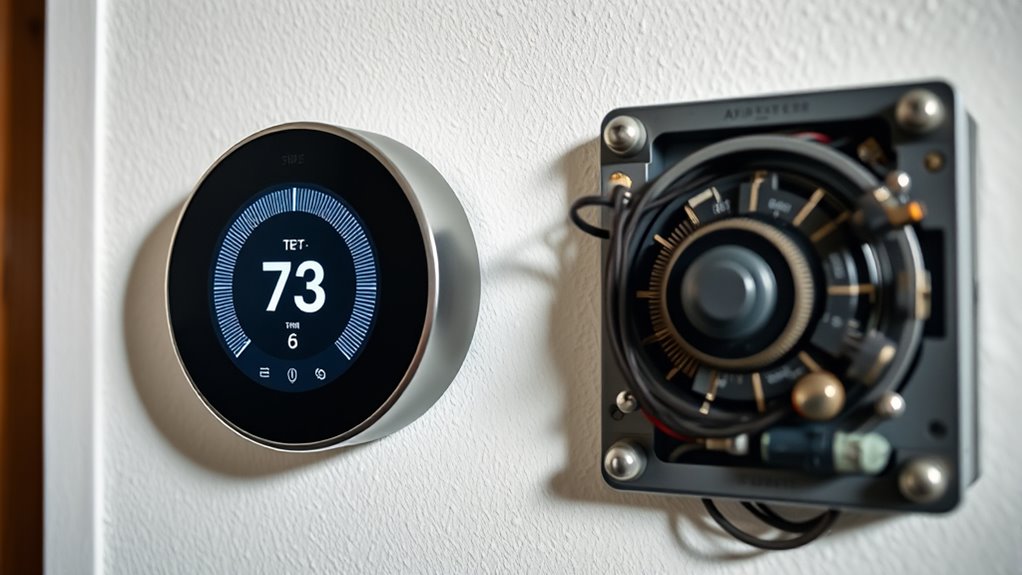
If your home relies on radiant heating, a smart thermostat might not be the best fit. Radiant systems heat surfaces and objects rather than the air, making air-based thermostats less effective for precise control. Since radiant heating responds slowly, adjustments or setbacks through a smart thermostat may offer minimal energy savings or comfort improvements. Many radiant setups operate continuously to maintain warmth, reducing the impact of programmable features. Compatibility can also be an issue, as some radiant systems aren’t compatible with smart thermostats at all. In these cases, installing a smart thermostat may not justify the cost or effort, especially if your primary goal is to optimize energy savings. For radiant heating homes, alternative solutions might be more effective. Additionally, understanding the trustworthiness and vulnerabilities of AI technology can help homeowners make more informed decisions about integrating smart devices with advanced features. It’s also important to consider the specific heating technology used in your home to determine whether a smart thermostat will truly enhance your comfort and efficiency.
Factors That Influence Cost Savings and Effectiveness
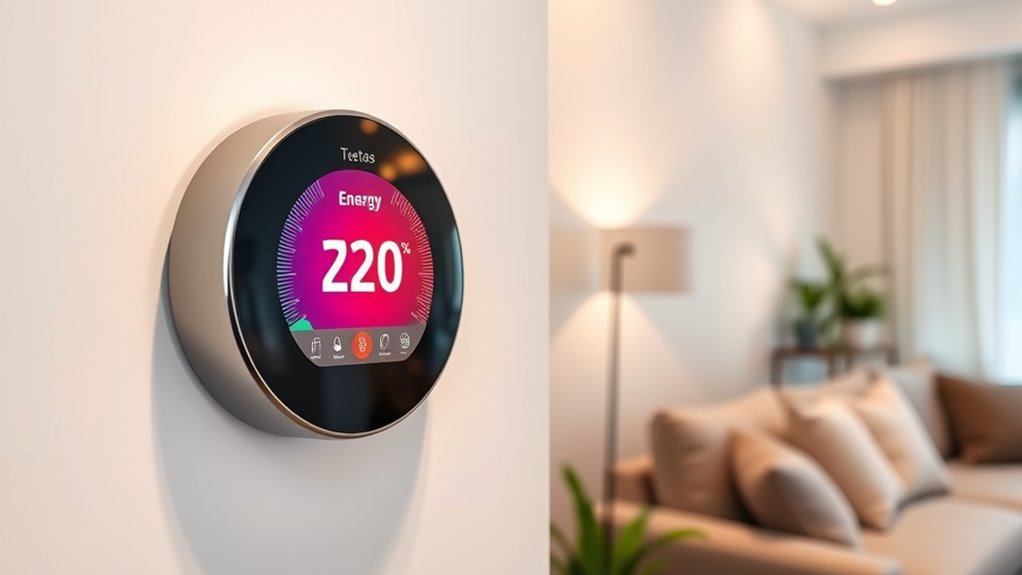
The amount of money you can save with a smart thermostat depends greatly on several factors, including your home’s climate, how you use energy, and your utility rates. Your energy use patterns and the compatibility of your HVAC system also play a big role in determining savings. For example, homes in regions with hot summers and cold winters tend to see higher savings compared to temperate areas. Proper scheduling, like reducing temperatures during unoccupied hours, can boost savings by up to 10%. Additionally, the presence of a compatible geothermal heat pump system can influence the extent of potential savings, as these systems operate more efficiently and respond well to smart controls. Energy efficiency plays a crucial role in maximizing savings, especially when combined with smart technology. Ensuring your HVAC system is technologically compatible can help unlock higher savings potential. Compatibility issues or an incompatible HVAC system can limit what you save, but implementing automated scheduling can still optimize performance. Keep in mind that even with ideal conditions, average savings hover around 8%, or about $50 annually, with higher gains in extreme climates. Additionally, integrating AI-driven data analysis can help optimize your thermostat settings for maximum efficiency.
Making an Informed Decision: Are They Right for Your Home?
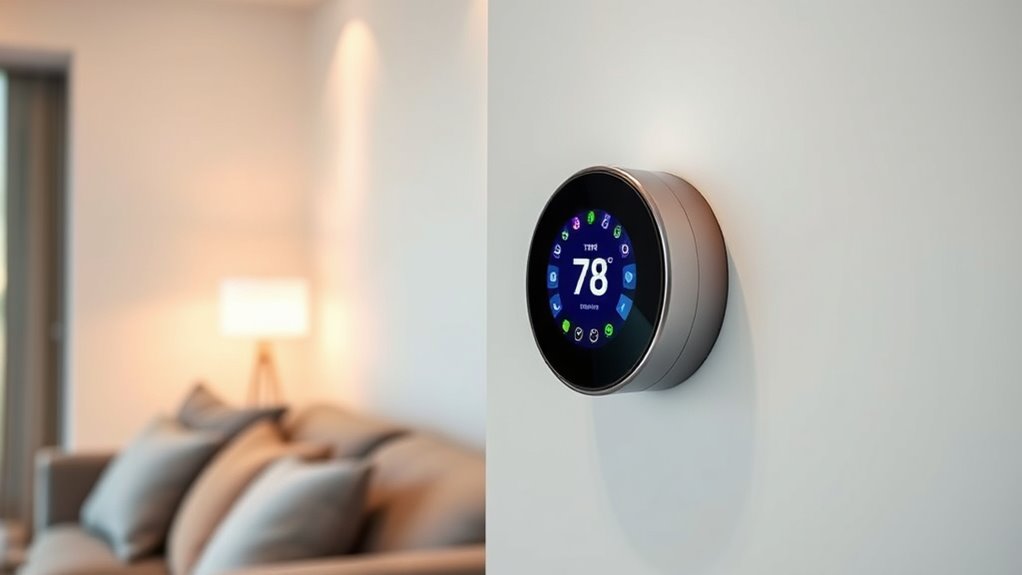
Deciding whether a smart thermostat is right for your home requires evaluating several key factors. Energy savings depend on your climate, home size, and usage habits. Homes with older or incompatible systems, like electric baseboard heaters, may see limited benefits. Proper setup and user engagement are essential for maximizing efficiency. Additionally, understanding the compatibility of your HVAC system with smart technology integration can influence the overall effectiveness of your smart home environment. Considering crochet styles for locs or other customization options can also impact how you personalize and optimize your smart home setup. Being aware of energy conservation strategies can further enhance potential savings and system performance.
Frequently Asked Questions
Is There a Downside to Smart Thermostats?
You might face some downsides with smart thermostats. They often need a C-wire, which older systems might lack, making installation tricky. Compatibility issues can limit features or prevent installation altogether. Plus, you could worry about privacy since these devices transmit household data online. Sometimes, their advanced features are confusing, and if your habits don’t change, the energy savings may be minimal. Consider these factors before deciding if they’re right for you.
Is It Worth Installing a Smart Thermostat?
Deciding if a smart thermostat is worth it is like planting a seed for future savings. You’ll enjoy about 8% lower energy bills and can control your home’s comfort remotely, making life more convenient. While setup and compatibility might pose some hurdles, the potential savings and increased convenience make it a worthwhile investment—especially if you want to take control of your energy use and boost home comfort.
What Happens if Wi-Fi Goes Down With a Smart Thermostat?
If your Wi-Fi goes down, your smart thermostat will likely revert to its last manual or programmed settings, so you won’t have remote control or automation features. Some models can still operate locally, allowing basic temperature adjustments, but advanced functions like scheduling and energy reports will be unavailable. Prolonged outages may disrupt your energy savings and comfort management, making manual control your only option until Wi-Fi is restored.
Do Smart Thermostats Lower Electric Bill?
You might think smart thermostats don’t really cut costs, but they do. By optimizing your heating and cooling schedules, you can typically save around 8% on utility bills, which adds up over time. Their ability to turn off systems when you’re away ensures energy isn’t wasted. With proper use, especially in extreme climates, smart thermostats can greatly lower your electric bill without sacrificing comfort.
Conclusion
Ultimately, whether a smart thermostat is right for you depends on your needs, your habits, and your home. Weigh the benefits against the costs, consider the features that matter most, and evaluate how it fits into your lifestyle. If comfort, savings, and convenience matter, then a smart thermostat can deliver. But if simplicity and upfront costs are your priorities, it might be worth exploring other options. Make an informed choice that aligns with your home, your budget, and your goals.
